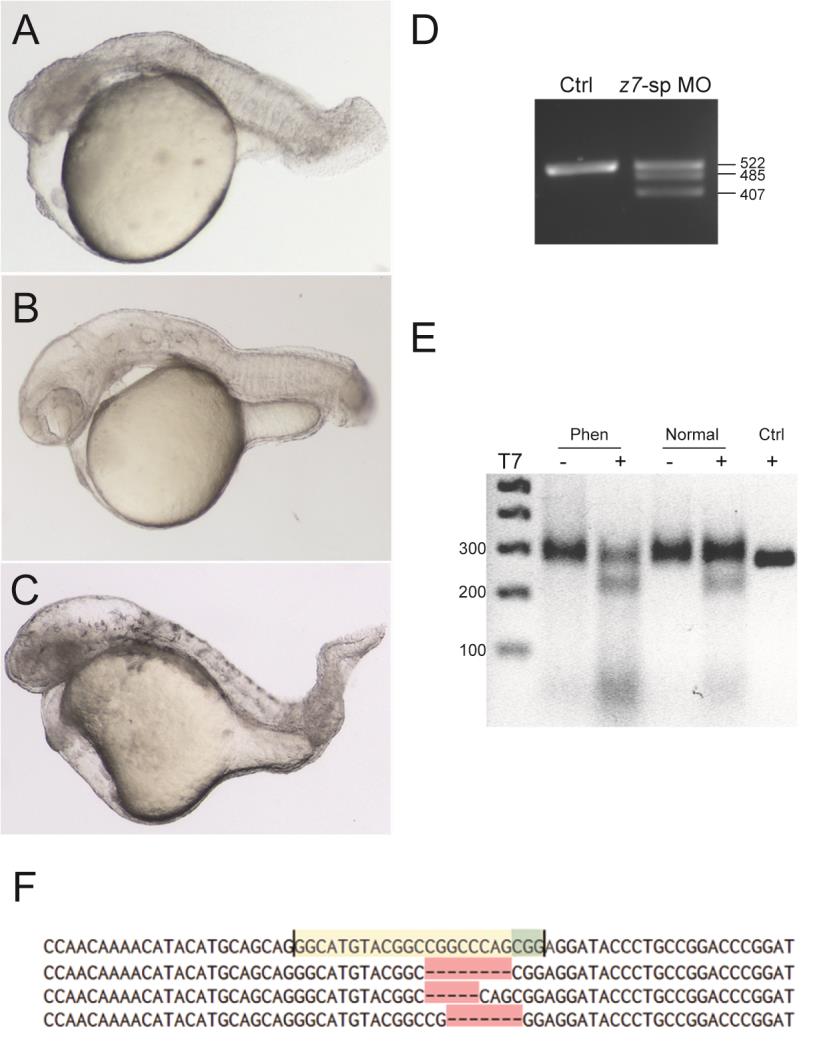Fig. S1
Embryos with a severe phenotype produced by the zimp7-sp MO injection (A), the zimp7-sp MO and the p53 MO co-injection (B) and the Cas9/zimp7-gRNA injection (C). (D) PCR amplification of zimp7 exons 1 to 4 confirm the splicing alterations produced by the zimp7-sp MO. Total RNA was purified from embryos injected with control and zimp7-sp MO. The 522 bp fragment corresponds to the amplicon produced by the regular transcript (including exons 1, 2, 3 and 4); the 407 bp fragment is produced when exon 2 is not included in the transcript. An additional unexpected 485 bp fragment was obtained. Sequencing of this fragment revealed a cryptic splice site within exon 2, which generated a fragment that partially lost this exon. Both shorter species generate out-of-frame products and non-functional peptides. Densitometric analysis indicated that the shorter fragments combined represent 60% of the total RNA. (E) A T7-endonuclease assay. PCR product samples from pools of Cas9/zimp7-gRNA injected embryos with zimp7-like phenotypes (Phen) or without defects (Normal) were digested for 20 minutes with the T7 EI. Comparison of the digested products revealed the presence of more mutations in the zimp7-like embryos. The control sample is a PCR product from non-injected embryos digested with T7. (F) DNA sequence of samples obtained from embryos with abnormalities demonstrates the presence of specific mutations in the zimp7 gene. The target sequence is highlighted (PAM in green).
Reprinted from Developmental Biology, 403(1), Moreno-Ayala, R., Schnabel, D., Salas-Vidal, E., Lomelí, H., PIAS-like protein Zimp7 is required for the restriction of the Zebrafish organizer and mesoderm development, 89-100, Copyright (2015) with permission from Elsevier. Full text @ Dev. Biol.

